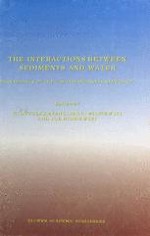1997 | OriginalPaper | Buchkapitel
Sources and Pathways of Particulate Organic Carbon in a Submarine Cave with Sulphur Water Springs
verfasst von : L. Airoldi, A. J. Southward, I. Niccolai, F. Cinelli
Erschienen in: The Interactions Between Sediments and Water
Verlag: Springer Netherlands
Enthalten in: Professional Book Archive
Aktivieren Sie unsere intelligente Suche, um passende Fachinhalte oder Patente zu finden.
Wählen Sie Textabschnitte aus um mit Künstlicher Intelligenz passenden Patente zu finden. powered by
Markieren Sie Textabschnitte, um KI-gestützt weitere passende Inhalte zu finden. powered by
The origin, quality and pathways of particulate organic carbon (POC) were studied from May 1991 to May 1995 in a submarine cave (Grotta Azzurra, Tyrrhenian Sea, Italy) with warm sulphur springs that support dense mats of sulphur-oxidizing bacteria. Multifactorial sampling designs were used to specifically address: (1) differences in the quantity and quality of suspended and sedimenting particles in two distinct regions of Grotta Azzurra, a weakly-illuminated outer region (Central Hall) and an innermost dark region (Snow Hall) characterized by the presence of sulphur waters; (2) the composition and fluxes of particulate material above and below the sulphurous boundary. The water and sediment trap samples were analysed for total particles, POC, particulate organic nitrogen (PON), chlorophyll a (Chl a) and phaeopigments (Phaeo). The microbial mats were assayed for carbon fixation and RubisCo activity. Stable carbon isotope ratios of the bacteria, benthic fauna and sediments were measured. The overallamount and flux of POC did not differ between the two regions of the cave. By contrast photosynthetic pigments decreased significantly from the outer to the inner region. The average POC:PON ratios of suspended and sedimenting material were lower than 10.2, and there was no apparent ageing or degradation from the Central Hall to the Snow Hall. Fluxes of POC above the boundary were on average 23.8% of fluxes measured below the boundary, and no Chi a was detected above the boundary. The mats of sulphur-oxidizing bacteria had a 13C depletion of −30 to −3 l‰, providing a marker for tracing POC from this source. The majority of the benthic animals showed ∂13C from −20 to −24‰. Some polychaete worms and echinoderms were more depleted (−25‰), indicating greater consumption of bacterial carbon, while sponges were not depleted compared with the benthos of the control cave (∂13C −18 to −19‰). It is estimated thatbacteria supply about 31% of the suspended POC in the Snow Hall. A larger input may be available to animals living close to the bacterial mats and to those in the more sulphurous Grotta Sulfurea cave.
